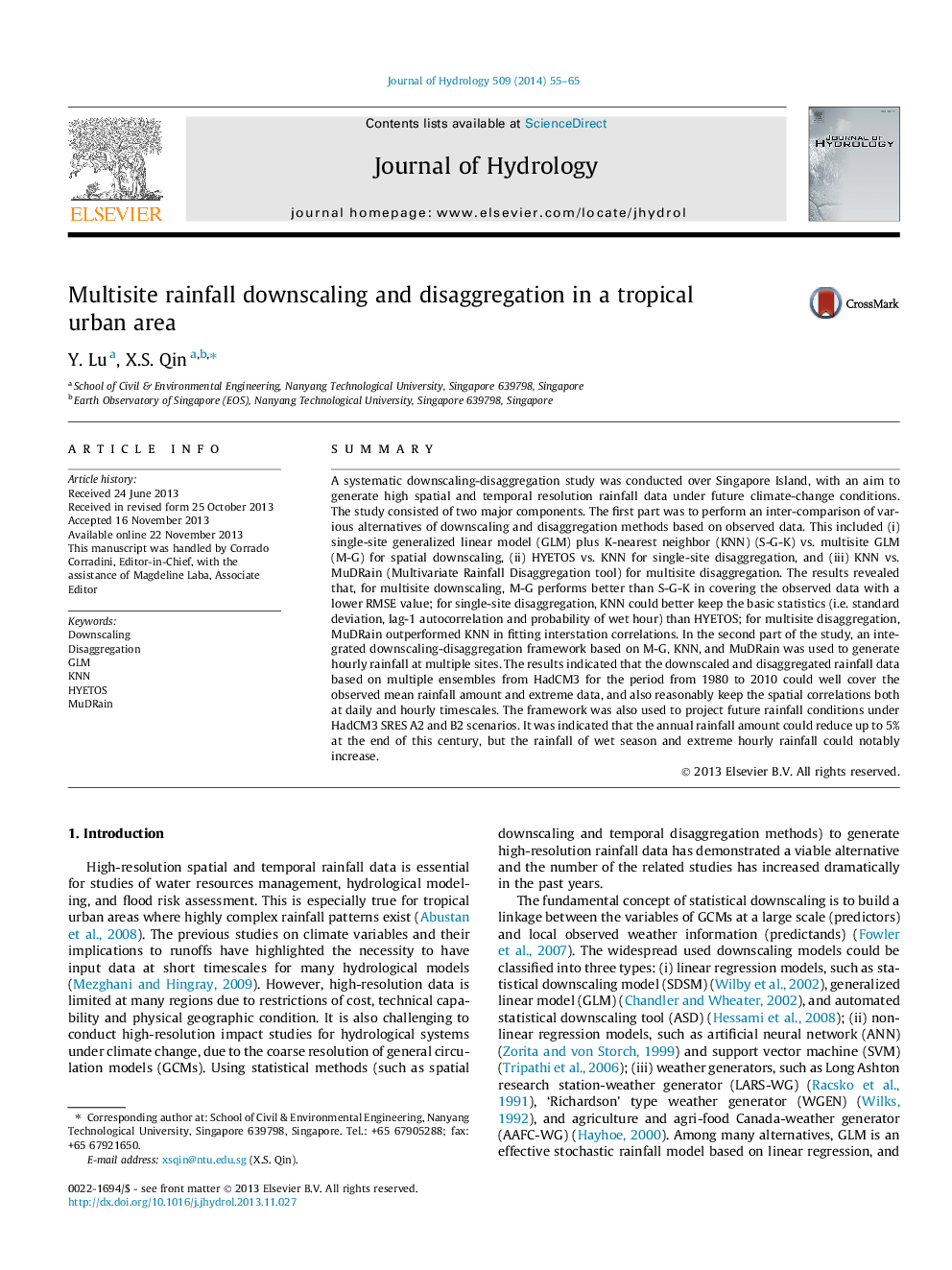| کد مقاله | کد نشریه | سال انتشار | مقاله انگلیسی | نسخه تمام متن |
|---|---|---|---|---|
| 6413388 | 1629939 | 2014 | 11 صفحه PDF | دانلود رایگان |
- A downscaling-disaggregation study was firstly attempted over Singapore Island.
- A combined GLM, KNN and MuDRain was proved to work well.
- Rainfall data at sub-daily timescales under climate change are examined.
SummaryA systematic downscaling-disaggregation study was conducted over Singapore Island, with an aim to generate high spatial and temporal resolution rainfall data under future climate-change conditions. The study consisted of two major components. The first part was to perform an inter-comparison of various alternatives of downscaling and disaggregation methods based on observed data. This included (i) single-site generalized linear model (GLM) plus K-nearest neighbor (KNN) (S-G-K) vs. multisite GLM (M-G) for spatial downscaling, (ii) HYETOS vs. KNN for single-site disaggregation, and (iii) KNN vs. MuDRain (Multivariate Rainfall Disaggregation tool) for multisite disaggregation. The results revealed that, for multisite downscaling, M-G performs better than S-G-K in covering the observed data with a lower RMSE value; for single-site disaggregation, KNN could better keep the basic statistics (i.e. standard deviation, lag-1 autocorrelation and probability of wet hour) than HYETOS; for multisite disaggregation, MuDRain outperformed KNN in fitting interstation correlations. In the second part of the study, an integrated downscaling-disaggregation framework based on M-G, KNN, and MuDRain was used to generate hourly rainfall at multiple sites. The results indicated that the downscaled and disaggregated rainfall data based on multiple ensembles from HadCM3 for the period from 1980 to 2010 could well cover the observed mean rainfall amount and extreme data, and also reasonably keep the spatial correlations both at daily and hourly timescales. The framework was also used to project future rainfall conditions under HadCM3 SRES A2 and B2 scenarios. It was indicated that the annual rainfall amount could reduce up to 5% at the end of this century, but the rainfall of wet season and extreme hourly rainfall could notably increase.
Journal: Journal of Hydrology - Volume 509, 13 February 2014, Pages 55-65
